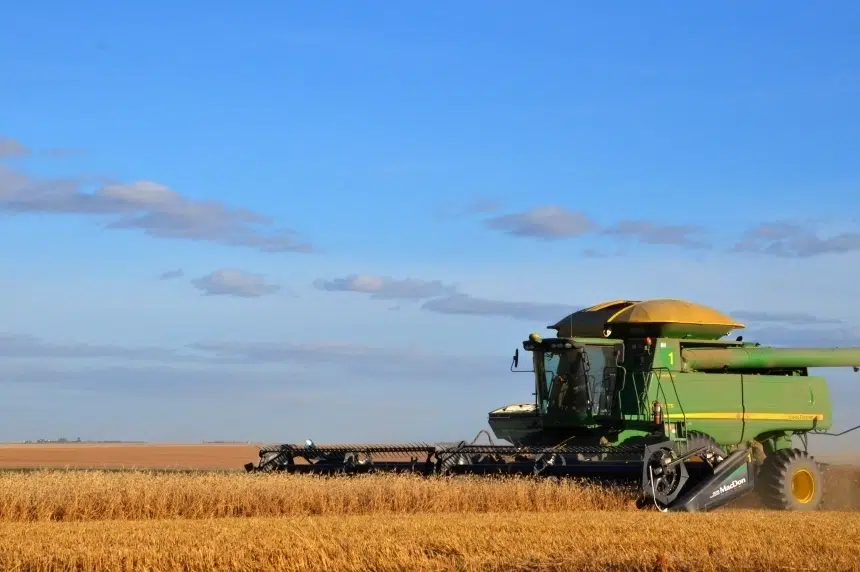Harvest in Saskatchewan is ahead of the five-year average for this time of year despite some delays due to rain.
According to the weekly crop report from the Ministry of Agriculture, which covered the period from Aug. 8 until Monday, harvest is already nine per cent done in the province, a single percentage point ahead of the five-year average and well ahead of the 10-year average of five per cent.
Harvest was slowed by rainfall in some parts of the province, particularly the northwest, but according to the report, “producers welcomed the moisture.” The biggest rainfall over the past week was in the Esterhazy area, which got 67 millimetres, while Lipton got 63 millimetres.
But despite the rain, which fell on all crop districts over the past week, many fields are still drier than producers would like to see. Cropland topsoil moisture was rated as 26 per cent adequate, 45 per cent short and 29 per cent very short. Hay and pasture land moisture levels were rated as 21 per cent adequate, 45 per cent short and 34 per cent very short.
“Crop reporters were asked to report on water supply and quality this week,” the report noted. “Provincially, moderate water supply shortages are occurring for livestock producers, with many anticipating more significant shortages soon while some are already reporting severe water shortages.”
The southwest has made the most progress on harvest, with 20 per cent of the crop already in the bin. Fall cereal crops are furthest along, with 61 per cent of fall rye and 56 per cent of winter wheat already combined.
“Oilseeds, in general, have been harvested the least so far,” the report stated.
Dry conditions, wind damage and pests – including gophers, grasshoppers and flea beetles – were responsible for crop damage over the past week, the report noted.
The report also included a note for the public about the large number of farming machines on the roads and highways at this time of year.
“The public is reminded to give machinery extra space and time when travelling on roadways,” the report stated.
The crop report also included a caution for producers, reminding them of the fire risks that come with dry conditions and encouraging them to “have fire mitigation resources at the ready.”











